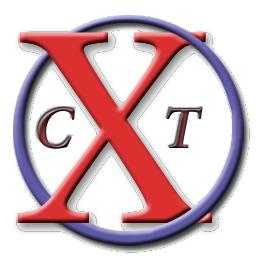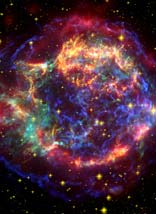| HEA Centers: Center for X-ray Technology | ||||
|
CXT is located within the High Energy Astrophysics Division of the CfA, with laboratories at Cambridge Discovery Park. The CXT goals are to provide a focus for the efforts of individual scientists working on optics, sensors, or future facility or mission concepts, primarily (but not exclusively) related to X-ray astronomy. The CXT will provide critical strategic leadership in new optics and detectors for the nation?s space astrophysics program. The CXT enlists participation from the staff scientists at CfA - federal and trust. Using SAO IR&D/REF funding for equipment, materials, and limited engineering support, several projects have been started - these include Active Pixel Sensors (a follow up to X-ray CCDs), Active X-ray Optics (examining how to modify an X-ray optic in a controlled manner), High Energy Reflectivity (how to improve X-ray reflectivity above about 10 keV, to make hard X-ray optics), Magnetic MicroCalorimeter X-ray Absorber (how to make arrays of Bi absorbers to be used with mag-cal readouts), Slumped X-ray Optics (how to make light weight optics by slumping thin glass on a figured mandrel), and High Speed Optical Imaging Detectors (how to monitor 1000?s of stars for occulations by small bodies). Potential applications include instruments for new missions that span all time frames. For example Active Pixel Sensors could be used for Con-X's grating readout, or in the focal plane of a possible X-ray Cluster Survey Mission in support of dark energy studies. The Active Optics are targeted to more distant missions such as Generation-X which is a NASA VIsion Mission slated for the 2025 and beyond time frame. High speed optical detectors could be use to carry out a census of the objects in the Kuiper Belt and Oort cloud. In the CXT, long term goals are identified, for example the need for a higher angular resolution, larger area successor to Chandra. To address this goal, several technologies are selected that work on different scales of approximation to making an ideal optic. Slumping may achieve a 5 arc second figure, selective deposition could improve this performance to 1 arc second, and finally active control could tune mirrors to the desired 0.1 arc second level. Each technology has an identified PI responsible for the work. The CXT provides some common infrastructure - lab space (currently the HRC lab), tools, equipment (e.g., our optical interferometer metrology station), and management oversight. For each technology, the first goal is to understand the basic physical processes governing performance rather than trying to meet a specific specification. This approach emphasizes a strategic approach to technology rather than a more immediate tactical approach. Initial studies are designed to see what can be accomplished and find out where the technology is heading. CXT should ultimately reach a size of 15 FTEs consisting of a mix of staff scientists, postdocs, graduate and undergraduate students, engineers and technicians. Funds for equipment, supplies and materials, etc. are also needed, leading to an overall operating budget of about $2.5M/year. To obtain this funding, the CXT "business plan" is to have a mix of core funding in the SI Federal base, contract and grant funding from NASA, NSF, DOE etc., and private funds through endowments, foundations and gifts. For further information please contact CXT Director Dr. Stephen Murray |

| |||




